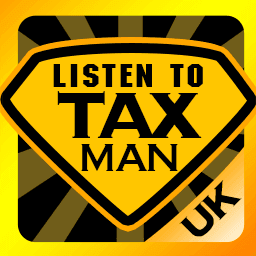The First 5 Steps To Self-Employment
*Please note the information in this article may be out of date
We take you through the initial steps to going solo.
Tue, 27 Apr 2021For many people, becoming their own boss is the dream. They get to work in an industry they love, choosing their own clients and – better yet – their own hours. The only problem is that becoming self-employed isn’t that straightforward. At least, not on the surface.
After all, having to evaluate your income and manage your own tax affairs can be daunting. That’s why we’ve asked Mike Parkes from GoSimpleTax to help set your mind at ease, by providing his first five steps to self-employment.
1. Register as self-employed
First things first, you need to let HMRC know that you’ll be paying your own Income Tax and National Insurance contributions (NICs) moving forward. You’ll need to do this as soon as possible – no later than the 5th October after the end of the tax year in which you first became self-employed. So, if you become self-employed between 6th April 2021 and 5th April 2022, you have until 5th October 2022.
It’s a relatively simple process though. All you need to do is register on the GOV.UK website, or fill in an on-screen form to then post to HMRC. Once they receive this, they’ll post your 10-digit Unique Taxpayer Reference (UTR) number within 10 working days. You’ll need your UTR to access your Self Assessment account, which allows you to submit your tax return.
Because of the length of time it takes for your UTR to arrive, I’d suggest that you don’t wait until the last minute to register. Doing so may mean you miss the deadline to file your first tax return, which can land you an immediate £100 fine from HMRC.
2. Get to grips with your tax bill
Next, it’s time to understand what tax you’ll be responsible for paying. First is your Income Tax, which is determined by your taxable income (that is, your earnings minus any allowable expenses and deductions). HMRC takes this information from your Self Assessment tax return and calculates your tax bill accordingly.
The amount of National Insurance you pay also depends on your taxable profit (income less expenses). Instead of the Class 1 NICs that employed people make, you’ll pay Class 2 (unless you earn less than £6,515 a year) and 4 (if you earn profits over £9,569 a year).
Class 2 and 4 NIC rates for the 2021/22 tax year are:
| Class Rate | |
|---|---|
| Class 2 | £3.05 a week |
| Class 4 | 9% on profits between £9,569 and £50,270 |
| 2% on profits over £50,270 |
3. Choose the correct insurance cover
This largely depends on which industry you’re in, but there are some general policies that all sole traders should consider. For example, if you employ another person, even if it is just part-time support to help complete projects, you are legally obliged to take out employers’ liability insurance. There is a significant fine for sole traders caught failing to have this.
You should also consider taking out public liability insurance. This protects your business should a client, customer or member of the public decide to take legal action. In the event that they suffer an injury at your premises, or you suffer an injury at their premises, it would also provide cover for damage to property.
Finally, you should consider insuring yourself for professional indemnity. This is where you protect yourself from a client lawsuit levelled at you on account of them being unhappy with the work you have done or the support you’ve provided.
We would always advise that you seek specialist advice from a suitably qualified insurance broker to discuss your requirements.
4. Identify any relevant tax relief in your line of work
Now you’re square with HMRC, and you’ve covered yourself legally, it’s time to enjoy the benefits of self-employment. All sole traders are eligible to claim relevant expenses to reduce their profits – and the lower the profits, the lower your tax bill will be.
This could include mileage for your car if you travel for work, training courses that help improve your knowledge or skill, or even a new computer that you use just for admin purposes. The only condition is that you use the purchase for business reasons only.
After you’ve incurred the expenses, and inputted the total amount on the relevant tax return, just be sure to store the receipts somewhere secure should HMRC request them. Software like GoSimpleTax makes this easy, by allowing you to take a picture of receipts and save them together with invoices and bank statements in the cloud.
5. Record income and expenses for your first tax return
A large number of sole traders log their income and expenditure towards the end of the tax year, causing unnecessary stress and a much longer tax return submission process. However, with real-time record-keeping, you can input this information throughout the year. This enables you to forecast your tax bill and better manage your cash flow.
Again, with Self Assessment software, this takes no time at all. Platforms like ours can give you an always up-to-date overview of your tax bill, which can help guide any business decisions you make. In fact, by seeing how much you owe well ahead of the Self Assessment payment deadline (31st January), you’re able to take the time to see if you have any expenses you might have missed or forgot about that may qualify for tax relief.
In order to be successful as a sole trader, you need to be maximising your take-home pay and steering clear of HMRC penalties. By following the above steps, you achieve both. So, are you ready to finally become your own boss?
For more tax guidance on becoming a Sole Trader, see here
Also, more relevant information in our Guide to Sole Trader v Ltd Company

 Our Favourite Tax App?
Our Favourite Tax App?
It's Simple
ListenToTaxman have teamed up with GoSimpleTax, the online self-assessment app to bring you, what is in our view, the easiest way of calculating and submitting your tax return we’ve seen so far. Key in your income and expenses into the app, and it will flag up any unclaimed allowances. Simple.
Once you’re comfortable with the information you’ve entered, simply submit via the app to HMRC. You’ll just need your Tax Reference Number - found on most tax correspondence. GoSimpleTax let you use their software free for 14 days. If you don’t think it’s right for you - don’t pay anything. If you do to choose to submit your tax information via the app, then at most of you will be charged £49 for their service.
